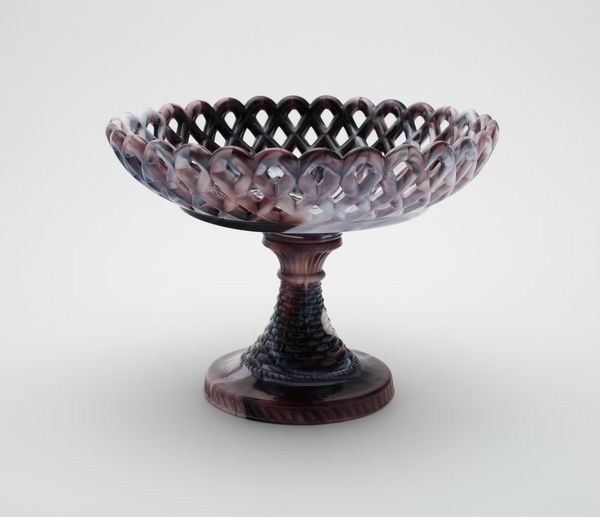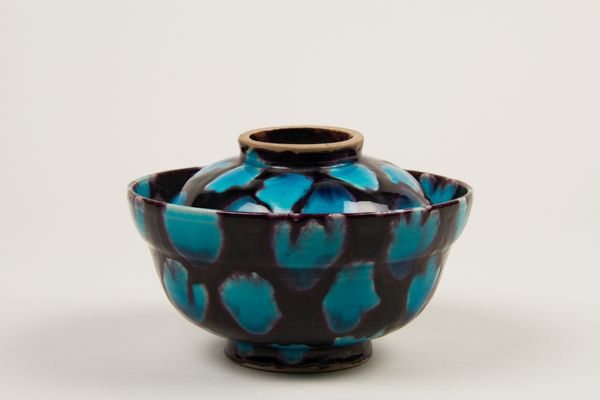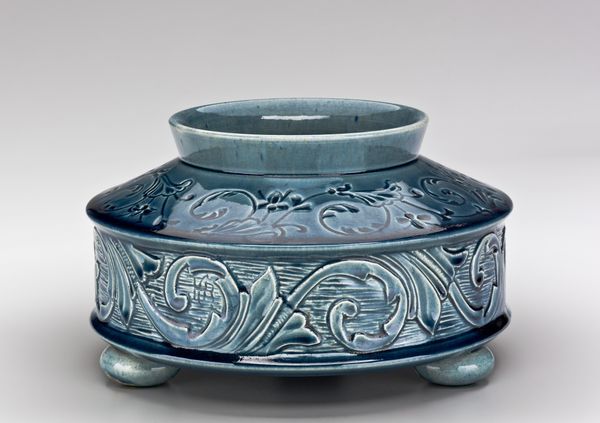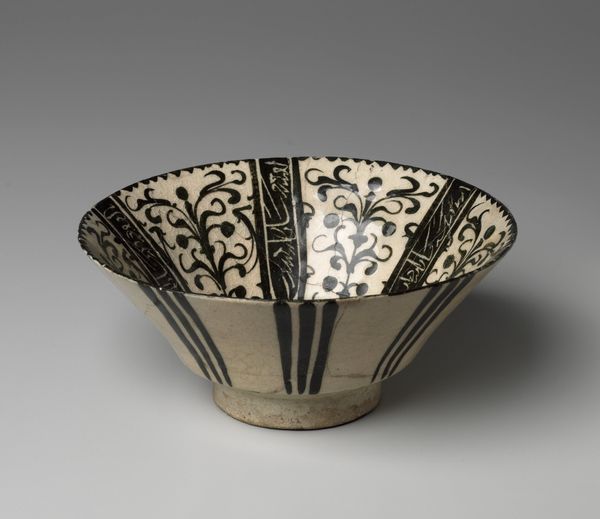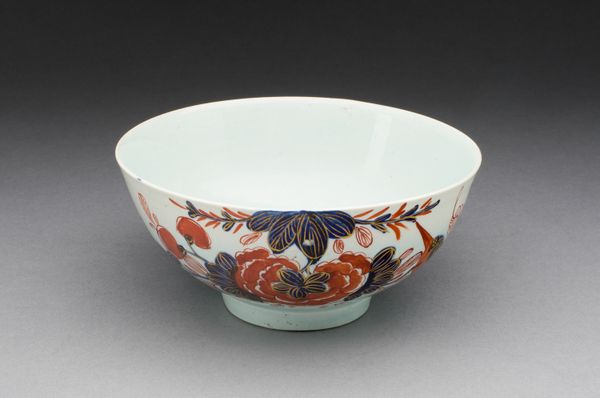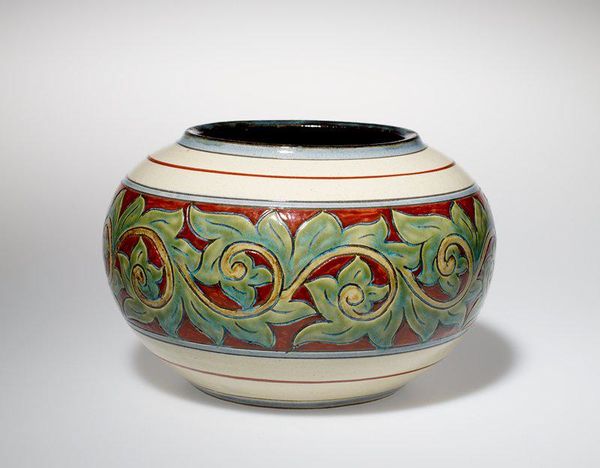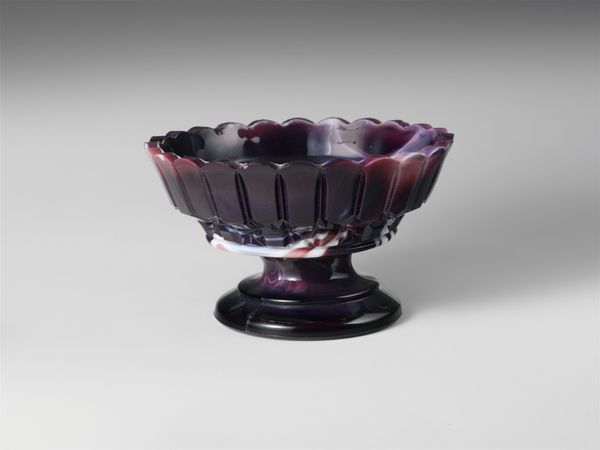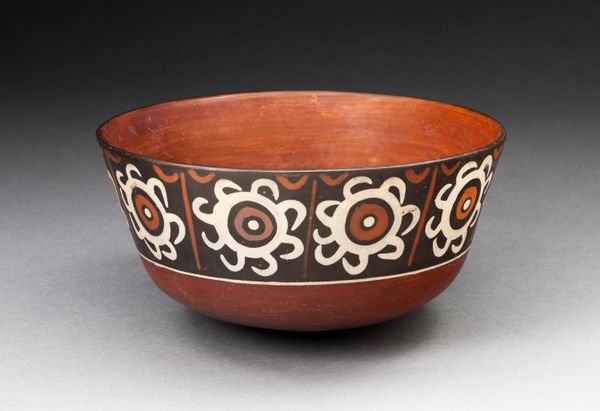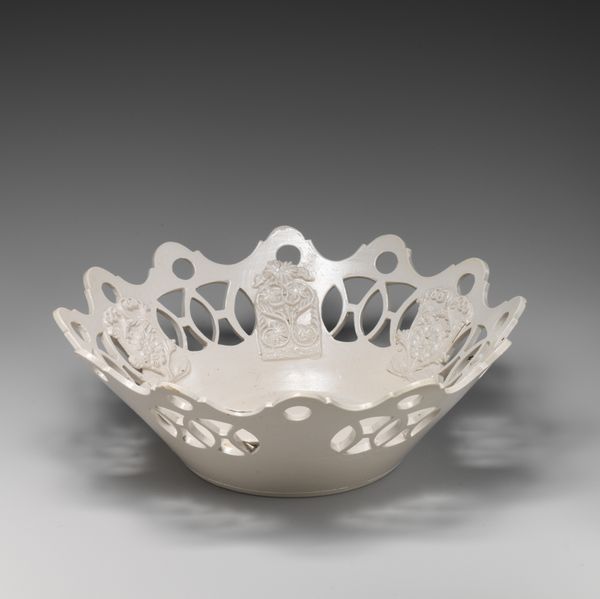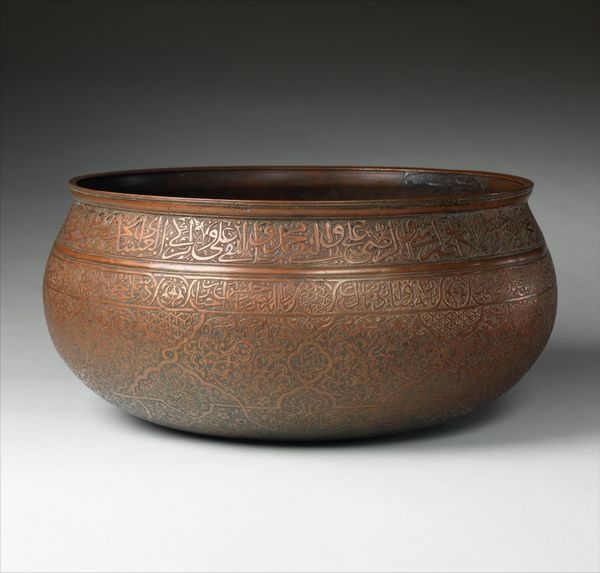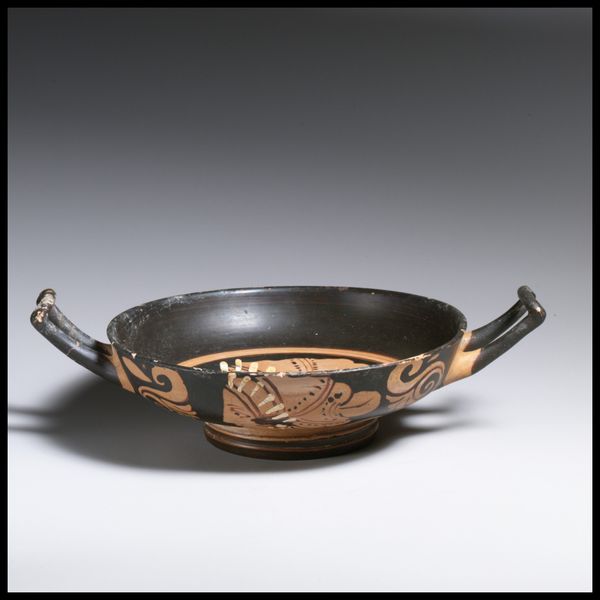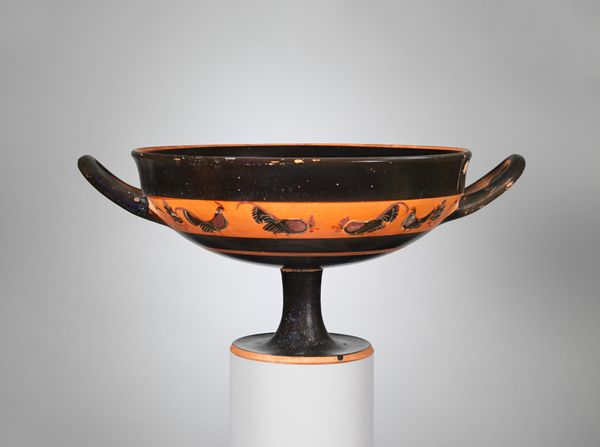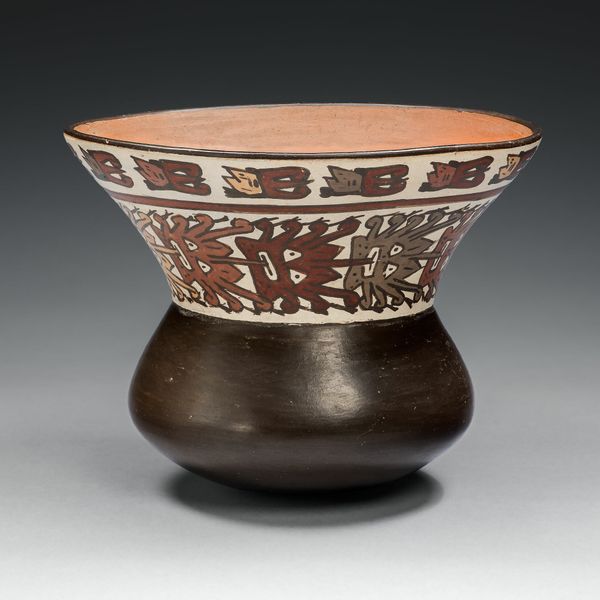
ceramic
#
medieval
#
asian-art
#
ceramic
#
stoneware
#
ceramic
#
decorative-art
Dimensions: 2 13/16 × 6 1/8 × 6 7/16 in. (7.14 × 15.56 × 16.35 cm)
Copyright: Public Domain
Curator: Welcome. Before us is a remarkable stoneware piece: a tea bowl stand, dating back to approximately the 16th century. The craftsmanship, though unsigned, suggests a deep understanding of ceramic art during the Medieval period in Asia. Editor: It’s unexpectedly dark, almost gothic, for something meant for tea. The repetitive swirling pattern creates this intense feeling of movement. Curator: Indeed. Tea culture in Asia at this time was deeply entwined with philosophical practices. Objects like this weren’t mere functional items. They were integrated in rituals of mindfulness. This stand elevates a simple ceramic bowl to an object worthy of display. Editor: Display, yes, but I’m curious about access. Who exactly was participating in these tea ceremonies? Was this mindfulness for everyone or confined to an elite few? Did such elegant tools democratize the rituals, or was their value about further restricting its accessibility? Curator: The material—ceramic, or specifically stoneware—plays an interesting role here. It balances artistry with everyday functionality, nodding to the cultural prestige associated with tea ceremonies without necessarily creating exorbitant material exclusivity. Editor: True. But even in apparent simplicity, there are hidden dynamics of power. The very act of meticulously crafting something functional could be about reinforcing labor hierarchies within these societies. How did these artisans see themselves in this production chain, I wonder? Curator: These objects certainly serve as portals into understanding social stratification. How things are used, how status is assigned... These considerations give these antique works a strong resonance for the contemporary museum visitor. Editor: Agreed. And this interplay – between the ritual, object, social structure and history, and power relationships within this cultural art makes our work today both fascinating and extremely pertinent. Curator: Well, perhaps, for now, listeners can simply ponder these elements during the course of their visit through this exhibit, with tea, or another beverage, of course, in hand. Editor: I hope so. It certainly encourages further conversations about who benefits, historically and in our own contemporary context, from such elaborate rituals.
Comments
No comments
Be the first to comment and join the conversation on the ultimate creative platform.
